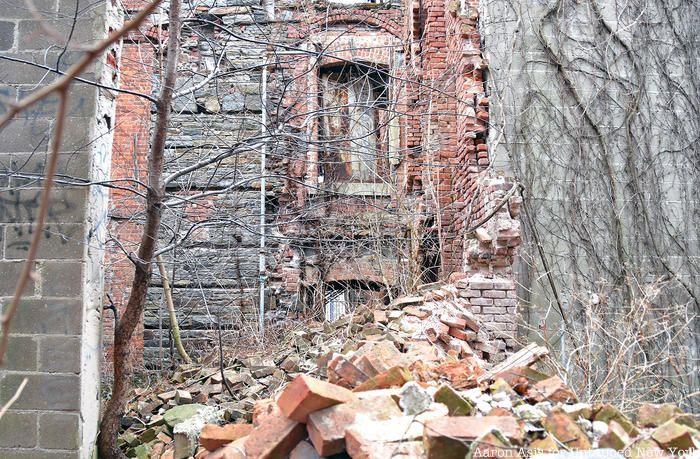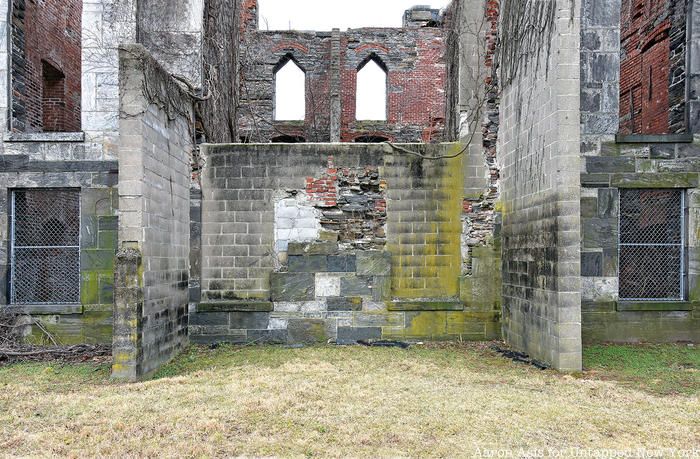Last-Minute NYC Holiday Gift Guide 🎁
We’ve created a holiday gift guide with presents for the intrepid New Yorker that should arrive just in time—


Many tourists to Roosevelt Island think of it as a quickly modernizing two-mile long island with high-rises, a new Cornell University campus, and waterfront structures with views of Manhattan. Yet much of the island’s dark history has eroded away — along with some of its historic buildings. The Renwick Ruin was originally built in 1856 on the southern end of Roosevelt Island as part of a series of prisons and hospitals constructed on the island during that time. Designed by architect James Renwick, Jr. as the nation’s first hospital dedicated to the treatment of smallpox, the structure is breathtaking in its abandonment and stands as our city’s only landmarked ruin. As the building continues to slowly deteriorate, efforts to stabilize the structure and increase public access highlight the importance of preserving this rare piece of New York City history.

Recently released is the new short film Unforgotten: Renwick Ruin by artist Aaron Asis, Untapped New York’s Artist in Residence. Asis and his team at Green Ghost Studios were given special access inside the abandoned structure and the film showcases perspectives of the Renwick ruin that are rarely seen by the public. We’ll be hosting a premiere of the film in our upcoming event, Unforgotten: The Renwick Ruin on July 15th, featuring Asis and Stephen Martin, Founder of Friends of the Ruin and the former Director of Design & Planning for FDR Four Freedoms Park Conservancy. In the event, see rare video and photographic imagery from inside the remnant structure, hear from the experts associated with the Ruin about the value of the ruin for our city, and hear from the advocates working closely with the Ruin about current preservation efforts. The event is free for Untapped New York Insiders —get your first month free of membership with code JOINUS.

The Renwick Ruins are what remains of the Renwick Smallpox Hospital and later the Maternity and Charity Hospital Training School. The 100-bed hospital opened on what was at the time known as Blackwell’s Island. Although the smallpox vaccine first was developed in 1796, New York City still experienced large smallpox outbreaks. This was due in part to increased immigration from countries where the vaccine was not readily available. The hospital was specifically built on the island’s southern tip to quarantine the ill from the rest of the island and the city.

The new film Unforgotten: Renwick Ruin takes viewers inside the ruins and rubble of the site, showcasing from the inside the structure that had been neglected for decades. Through close shots and drone footages, Asis and his team reveal the true extent of the structure’s damage, calling for increased efforts for preservation. In the film, the dilapidated structure contrasts with the pristine Franklin D. Roosevelt Four Freedoms Park, as well as the robust buildings of downtown Manhattan.
The team interviewed four people who have led efforts to increase awareness of the ruins. Judith Berdy, President of the Roosevelt Island Historical Society reflected on how “peaceful and tranquil” the island is, while Stacy Horn, author of Damnation Island noted how that quiet atmosphere may have meant the exact opposite for those at the hospital 150 years earlier. Susan Rosenthal, former president of the Roosevelt Island Operating Corporation noted that “boats would come from Manhattan to here with all the people they wanted to get rid of,” suggesting that Roosevelt Island used to be a place of segregation, not paradise. And Stephen Martin, Founder of the Friends of the Ruin, stated that the city has been obsessed with building “new shiny structures at every turn, but you have this very beautiful that’s actively decaying and the city almost doesn’t know how to respond to that.” Horn further reflected on how because few people know about the terrible conditions of patients in the hospital, her writing seems to “restore them” and uncovers the truth.
Until 1875, Renwick Smallpox Hospital, built in the Gothic Revival style, was a dark place. The hospital treated over 7,000 people a year, and about 450 patients died there annually. The deadly disease that killed millions would continue to take its toll on New Yorkers, and in 1875 the smallpox hospital was moved to North Brother Island since Blackwell’s Island had become too populated.

The building was converted into a nurses’ dormitory and training hospital, and in 1905 two Gothic Revival wings were added. The hospital had closed by the 1950s after the island became more urbanized and many nearby structures fell into disrepair. After years of inactivity inside the buildings, they became ruins, and it wasn’t until 1972 that it was added to the National Register of Historic Places. In the 1990s, activists pushed to raise funds to stabilize the structure, but a section of the north wing collapsed in 2007. In 2009, ground was broken on the Franklin D. Roosevelt Four Freedoms Park, which included plans for stabilizing the ruins. If all goes well, the Renwick Ruin would be open to the public following a $4.5 million stabilization project.
Join our upcoming premiere of the new film, Unforgotten: Renwick Ruin, free for Untapped New York Insiders. Get your first month free of membership with code JOINUS.
Subscribe to our newsletter